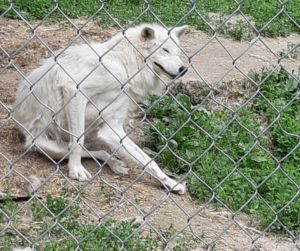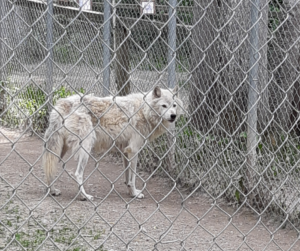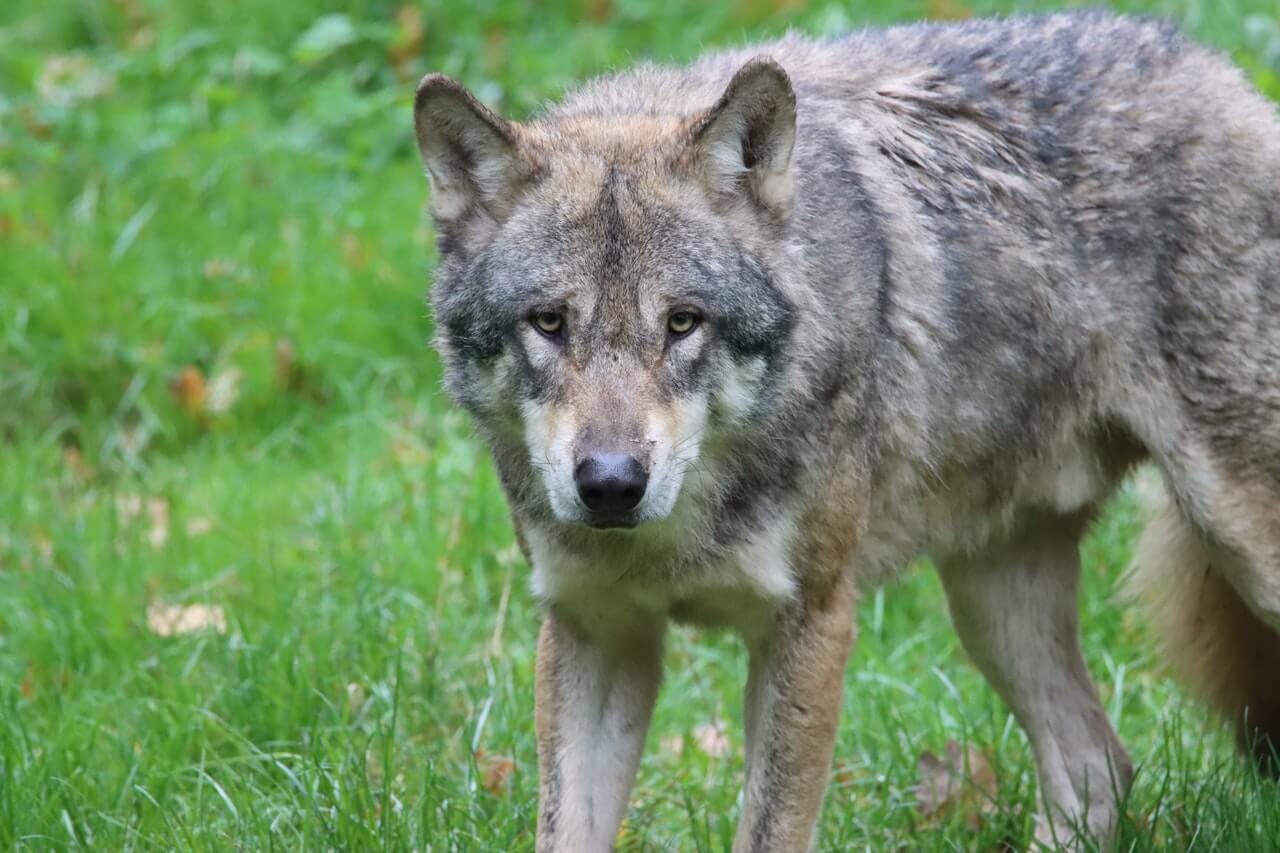Last week, Eddy and I went to visit the Northern Lights Wolf Centre in Golden, BC.
I wasn’t sure what to expect, but it was an unforgettable experience.
We arrived in the nick of time for their interpretive tour, and the animated gal giving the tour made our education about wolves fun and interesting.

We only took the interpretive tour, which was around the two enclosures, but it was 25 minutes of great information about how wolves interact, eat, behave and play a role in the food chain.
Flora (The Wolf Ambassador), Scrappy Dave and (I think) Farley took wicked naps during the tour, but as soon as everyone left, they woke up and meandered around to see what was up.
We got some pretty cool pics.
Some of the less tolerant wolves were in another enclosure in the back, but you could still watch them as they moved around and interacted with each other.
(I don’t blame them for wanting some privacy.)

We also found out you can take a walk with some of the wolf pack if you want! (We didn’t this time, but I think it would be well worth the cost, now that we know what to expect.) They have guides that go with you, but seeing as how Flora travels to schools to educate people on wolf behavior and conservation, you probably don’t have much to worry about unless you’re a complete spaz.
The gift shop has some great information, shirts, books, puzzles and other souvenirs you can bring home, and everything goes back into funding this incredible program.
We walked away with some really cool pics and stories, but overall, what stuck with me was what we learned about how bad a reputation these guys have.
The Big Bad Wolf maybe screwed it up for all the rest of them?
(Scroll down to see the video of the wolves walking around their habitat at the Wolf Centre!)
The Gray Wolf is Still Hunted in Canada
We were also pretty shocked to find out that you can still hunt wolves in Canada.
“The gray wolf is a game species in most of Canada.”
– International Wolf Center
Surprisingly, the United States is ahead of us on this. Perhaps they too learned something from the Yellowstone National Park Wolf Restoration in 1995, when 31 Western Canadian gray wolves were relocated to the park to help them reintroduce the animals to the area, after being essentially wiped out in the 1920s. By 1974, the gray wolf was listed as endangered.
To the south of Canada, the wolf is listed as a threatened species under the American Endangered Species Act. Canada has no such designation for the wolf, despite the fact that it has been extirpated from much of its former habitat.
Alberta Wilderness Association
What’s interesting about that story is that this happened back in the day when people didn’t really understand the impact of messing around with Mother Nature, or the consequences. The 60s and 70s brought more attention to this, but it still took a long time to start fixing the damage. The good news is that wolves seem to be more resilient than other species, such as bears.
Wolves are Being Shot From Helicopters & Poisoned
Even more disturbing is that wolves are regularly poisoned in parts of Canada in an attempt to cull the population and reinstate the dying caribou population, which wolves eat. (These are also used on coyotes, bear, skunks and other species.)
Strychnine recently underwent re-evaluation as an allowable pesticide in Canada through the federal Pest Management Regulatory Agency (PMRA), which is a sector of Health Canada.
www.wolfawareness.org
What makes no sense though (And this was pointed out at the Wolf Centre) – if you poison a wolf and it dies without being monitored or removed from where it passed, what happens to all the other animals, birds and insects who will naturally try to eat the remains? And why use poison at all? It seems a particularly inhumane way to kill an animal, never mind the resulting consequences for everything else in the environment that comes near it.
Due to the Woodland Caribou Recovery Act, ‘wolf culls’ are supported, which involves wolves being pursued and shot by helicopter (Aerial Wolf Kill Program), and being left crippled or dead. The thought behind this seems to be that if there are less wolves, there will be more Caribou?
Except for all of the conservationists and experts who point to the fact that wolves and Caribou have co-existed for centuries, as part of the natural ecosystem. What has NOT always been part of the ecosystem is humans who have contributed to the loss of habitat of the Caribou, from logging, snowpack variation and snowmobiling.
What You Can Do to Help the Wolves
Why are we writing about this on a dog training site, you may ask? We have the privilege to live amongst nature and the creatures who make up that ecosystem. We admire it, we seek refuge in it, and we want to experience it, yet we don’t always understand how badly we can damage it by being around it.
This is an educational site. We want readers to learn some stuff.
That said, I am not an expert in wildlife conservation, I am simply someone who was very moved by what is happening to this beautiful animal, and am horrified by the thought that if we keep messing around with our natural habitats and the creatures who live in them, we won’t have them any more. And the only way we can stop it is by educating ourselves on what is happening, speaking up and doing something about it.
On that note – STOP LITTERING WHEN YOU GO HIKING. It’s probably not you. But you know you know someone who just drops shit on the ground without a thought. Give them a smack for me.
If you want to do more to support wolf conservation, check out their Northern Lights Wolf Centre resources on how more of us can get involved.
You can also visit the Wolf Awareness website to get involved in banning the use of poisons and the Aerial Wolf Kill Program.



